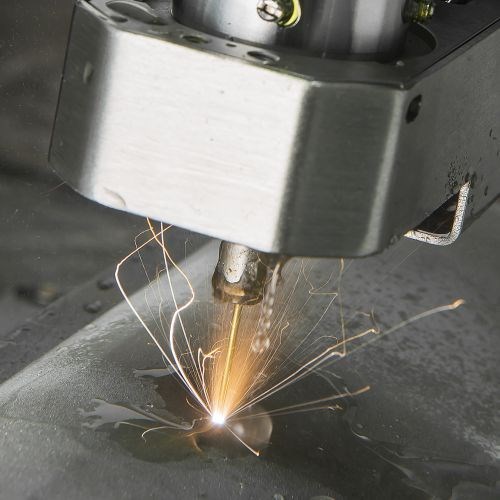EDM’s Key Technologies Today
A representative of machine maker Chmer lists some of the features and capabilities that hold the most promise for EDM users now.

There was a time when EDM machine maker Chmer (Taichung City, Taiwan) might have expected high speed milling to take the place of a significant amount of die sinker EDM work. The company developed a line of high speed milling machines to complement its sinker, wire and holemaking EDM machines in anticipation of this change. But things didn’t work out that way—illustrating, among other things, how difficult it is to predict technology adoption. On a recent trip to Taiwan, I had a chance to speak about this with Chmer Marketing Director Brad Wang.
While the ability to take fast, accurate cuts at high feed rates potentially makes milling a contender for certain complex die/mold forms that sinker EDM is used to produce, EDM is still more efficient for features such as deep cavities, fins and many thin walls. These features occur just often enough that high speed milling has not been able to unseat the established technology to any considerable extent. However, high speed milling has proven popular among Chmer’s customers nevertheless, not as a replacement for EDM but as a complement. The fast, accurate cutting is efficient for roughing complex mold forms before the sinker EDM is used to complete those features that EDM is still the best at finishing.
The technology needs and preferences of customers reveal themselves over time, Mr. Wang says. His hope is for Chmer to continue to adapt. Here are the EDM features and capabilities right now that he sees as becoming increasingly important:
1. Linear Motors. Among each of the company’s EDM types (and its milling machines) are models equipped with linear motors for axis motion. Linear motor machines cost more than machines driven by ballscrews, Mr. Wang says, but these motors save cost through reduced maintenance while improving the accuracy of the machine. Compared to conventional drives, a wire EDM machine with linear motors can generate sharper corners on precise components such as die punches. More, linear motors maintain their accuracy over time. This is not the case with ballscrews, which wear and become less precise over time due to the ongoing surface-to-surface contact.
2. Machine Monitoring. Applications of EDM often involve rows of machines all running largely unattended because the cycles are so long. The unattended nature of the process makes the machines ideal for monitoring systems permitting remote viewing of the current status of the machine as well its performance history over time. Chmer’s in-house control has enabled the company to develop its own remote monitoring system, among other special features. (Read on.)
3. Ease of Use. The in-house control has also enabled Chmer to develop a programming system enabling inexperienced users to employ EDM effectively. An operator can enter the workpiece material and diameter of the wire along with the desired roughness of the machined surface to let the control automatically set the cutting conditions and parameters required.
4. Hole Making. Among the three EDM types, holemaking looks to offer the most potential for future growth, says Mr. Wang, thanks to the long-term likely demand for cooling hole machining in turbine components by the aerospace sector. Key capabilities here include precise CNC interpolation to give small holes with a diffuser (open funnel) form at the mouth, as well as integration with B-axis indexing for the array of angles characteristic of the set of holes in a typical blade.

Chmer’s AD4L is a linear-motor equipped holemaking EDM.
Related Content
10 Things to Know About Creep-Feed Grinding
Because of the high material removal rate creep-feed grinding can deliver in challenging materials, grinding might not be just the last step in the process—it might be the process.
Read MoreBuying a Lathe: The Basics
Lathes represent some of the oldest machining technology, but it’s still helpful to remember the basics when considering the purchase of a new turning machine.
Read MoreChoosing The Right Grinding Wheel
Understanding grinding wheel fundamentals will help you choose the right wheel for the job.
Read MoreInside an Amish-Owned Family Machine Shop
Modern Machine Shop took an exclusive behind-the-scenes tour of an Amish-owned machine shop, where advanced machining technologies work alongside old-world traditions.
Read MoreRead Next
3 Mistakes That Cause CNC Programs to Fail
Despite enhancements to manufacturing technology, there are still issues today that can cause programs to fail. These failures can cause lost time, scrapped parts, damaged machines and even injured operators.
Read MoreThe Cut Scene: The Finer Details of Large-Format Machining
Small details and features can have an outsized impact on large parts, such as Barbco’s collapsible utility drill head.
Read More
.jpg;width=70;height=70;mode=crop)

























